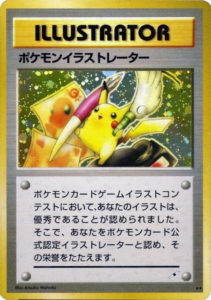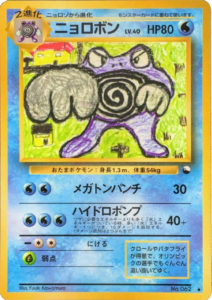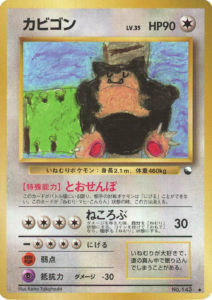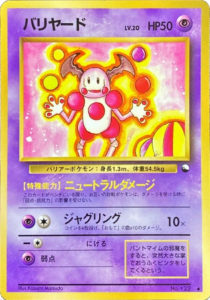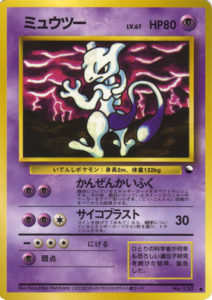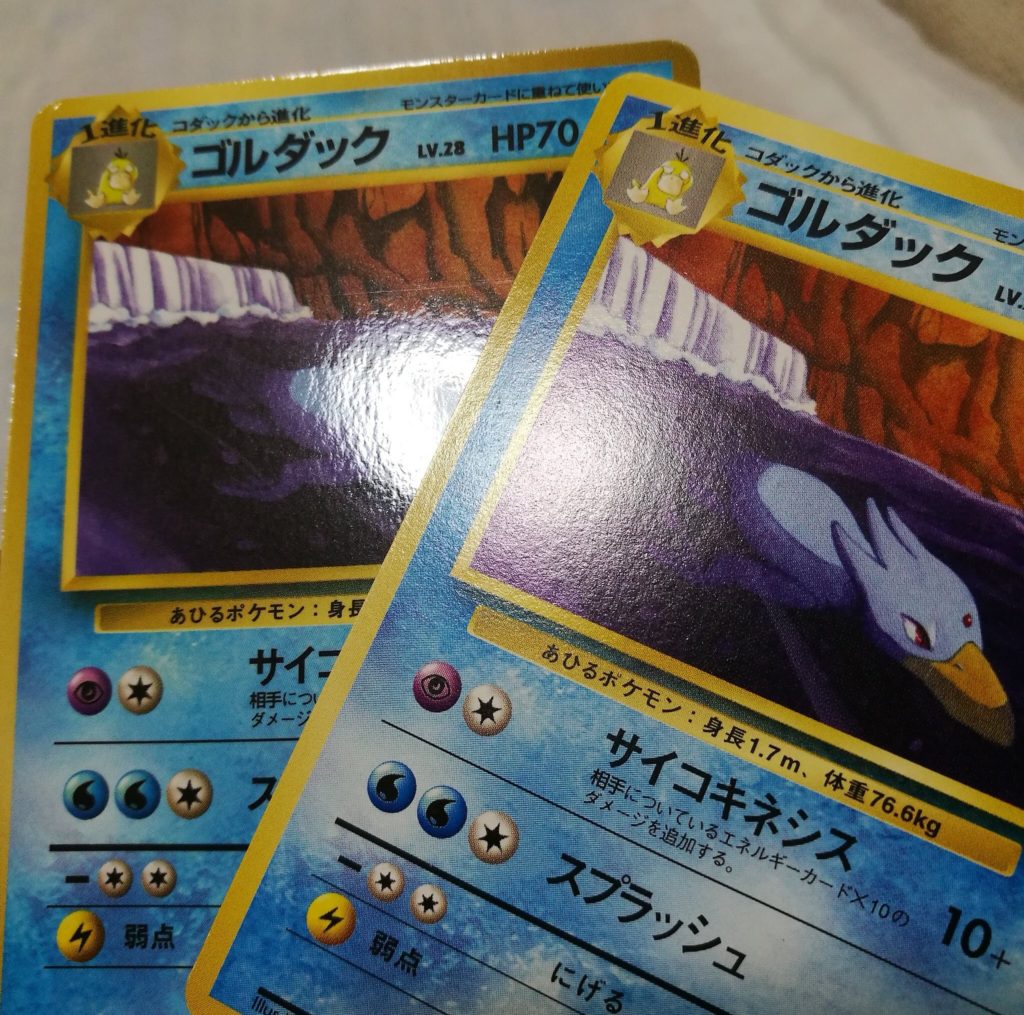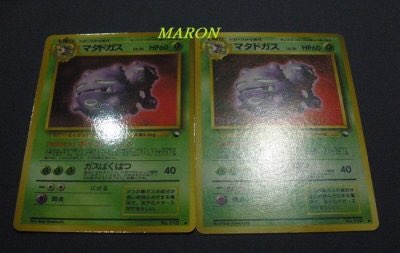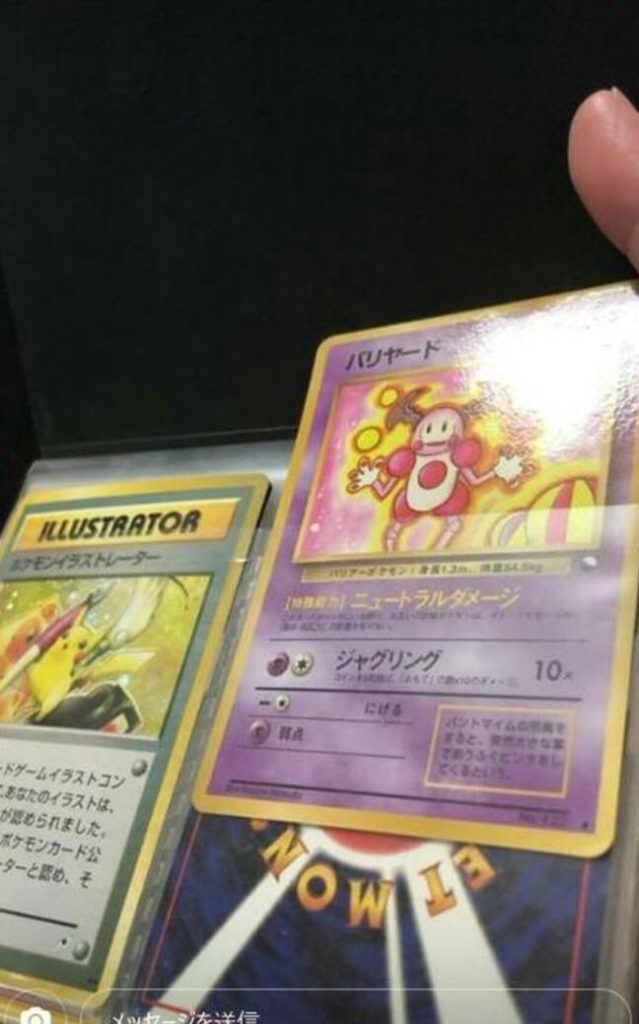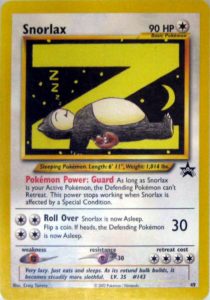From the end of 1997 through the summer of 1998, Shogakukan’s CoroCoro Comic hosted 3 illustration contests. Each contest would be announced in a monthly issue of the comic, and results would be announced around 2 months later in another issue. These contests were the only source for perhaps the most famous (and expensive) card in the Pokemon TCG: Pokemon Illustrator.
First Pokemon Illustrator Contest
The first Pokemon Illustrator contest was announced in the November 1997 issue of CoroCoro Comic, published on October 15, 1997. it invited readers to draw their favorite Pokemon and mail in the entry.
Winners were announced in the January 1998 issue of the magazine 2 months later. 3 entrants were selected for the Grand Prize, and they each received a copy of the Pokemon Illustrator card. The Grand Prize winners would also receive 20 copies of a Pokemon TCG card featuring their illustration.

Winners
20 other entrants were selected for the Special Award (two of which were shown in the magazine). Each of these Special Award winners also received a Pokemon Illustrator card, making the total number distributed from the first illustrator contest 23 copies.
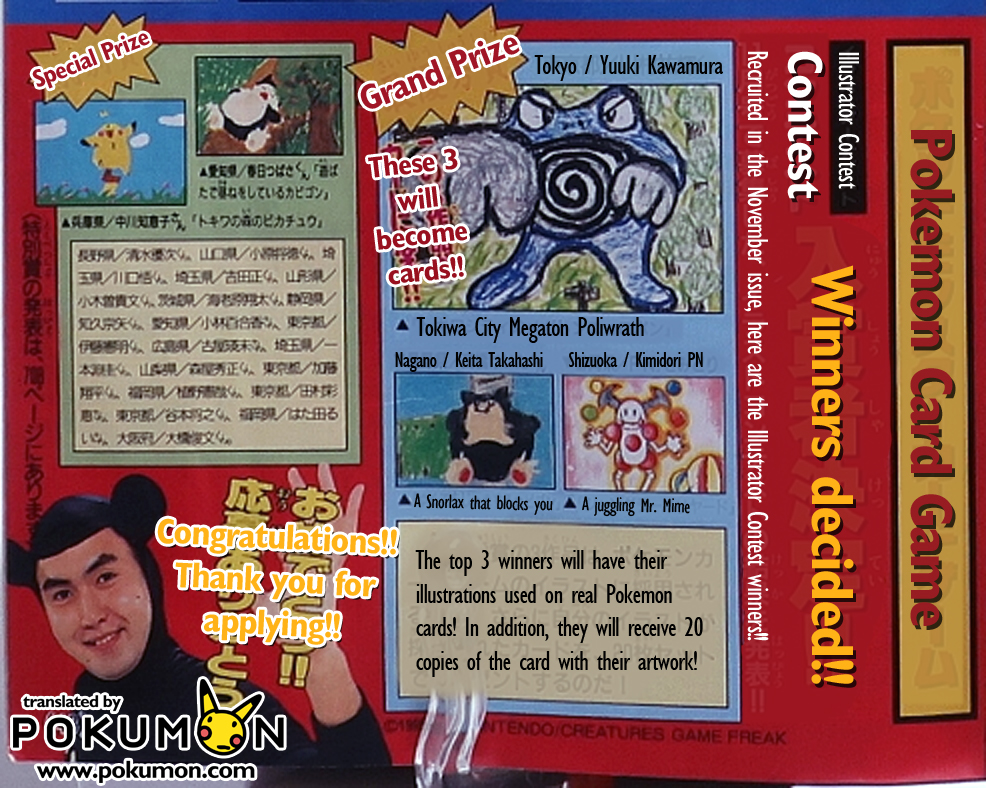
The selected winners were later printed in the first vending machine set, Expansion Sheet 1.
- Yuuki Kawamura (Tokyo Prefecture)
- Keita Takahashi (Nagano Prefecture)
- Kasumi Matsuda (Shizuoka Prefecture). Entered the contest under the pseudonym “PN Kimidori”
“Mewtwo Strikes Back” Illustration Contest
A second illustration contest was announced in the May 1998 issue of CoroCoro Comic, published on April 15, 1998. The contest commemorated the release of the first Pokemon Movie, Mewtwo Strikes Back, releasing later in the summer in July 1998.
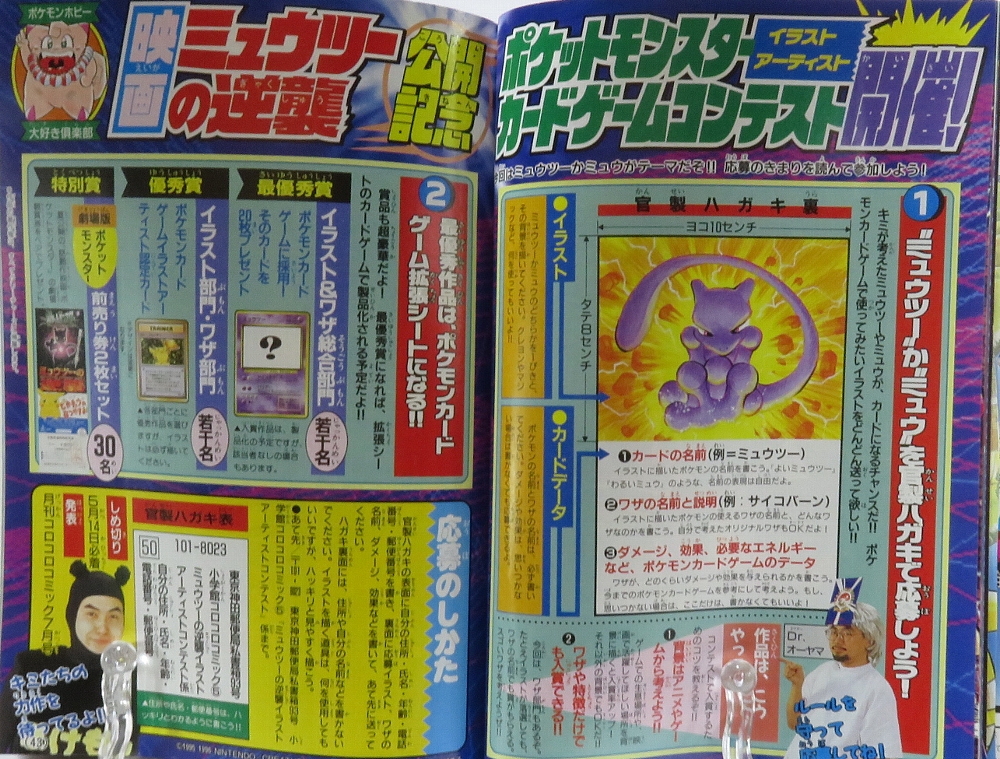
Unlike the previous illustration contest, which was very open-ended, this contest was much more specific in its entry instructions. Additionally, not only would entrants have to draw an illustration, they would also have to come up with the card’s attacks and other effects. Entrants used the back of the official entry postcard to design their card, and then would subsequently mail it in.

Entrants would have to do the following to enter:
- Choose either Mew or Mewtwo to illustrate.
- Illustrate the Pokemon on the top half of the postcard.
- Come up with a card name (players could use modifiers like “Light”, “Dark”, or even owner’s like the Gym Leader Pokemon)
- Come up with the card’s attacks and their effects
- Come up with Pokedex data, energy costs, etc. Many of these were optional, as multiple winning entries were missing one or more.
The “Grand Prize” winner would receive a Pokemon Illustrator card as well as 20 copies of their designed card. The designed card would later be printed in an Expansion Sheet set.
There would also be “Excellence Award” winners for 2 categories: Illustration and Attacks. The first would be judged on art quality, while the second would be judged on the card’s attack’s name and effects.
Lastly, 30 “Special Award” honorable mentions would receive a set of 2 advanced screening movie tickets for the Pikachu’s Summer Vacation short film, and the Mewtwo Strikes Back movie.
Winners
Winners would be announced 2 months later in the July 1998 issue of CoroCoro Comic, published on June 15, 1998.
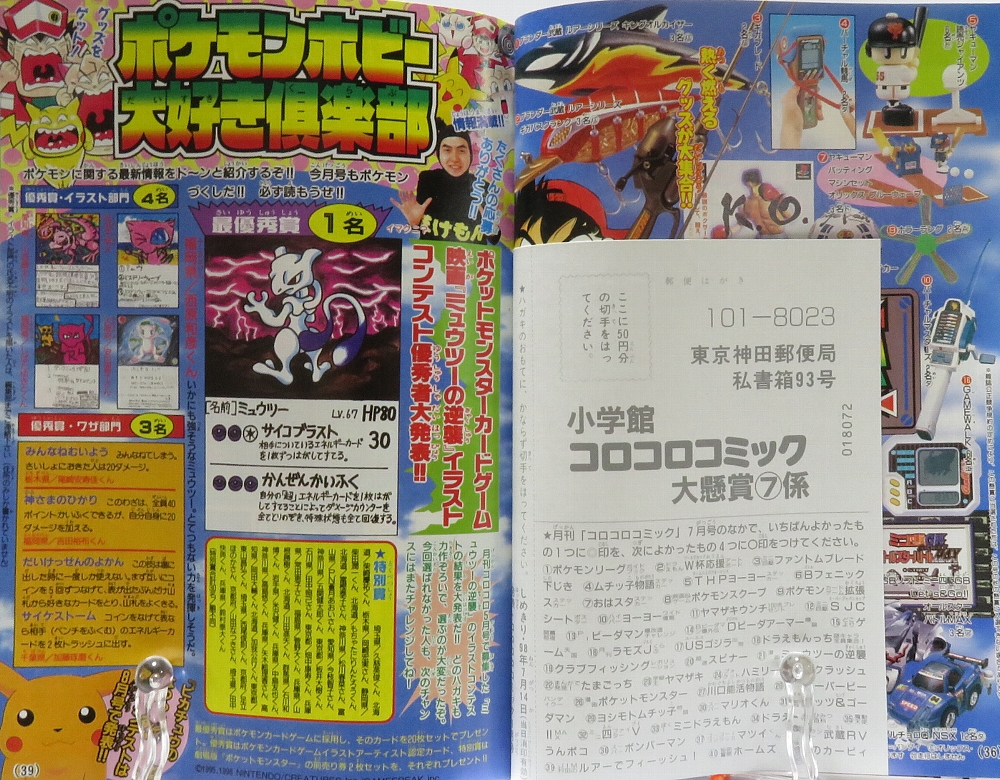
1 Grand Prize Winner was selected, along with 4 winners for the Excellence Award: Illustration category and 3 winners for the Excellence Award: Attacks category. This meant another 8 copies of Pokemon Illustrator were issued through this contest.
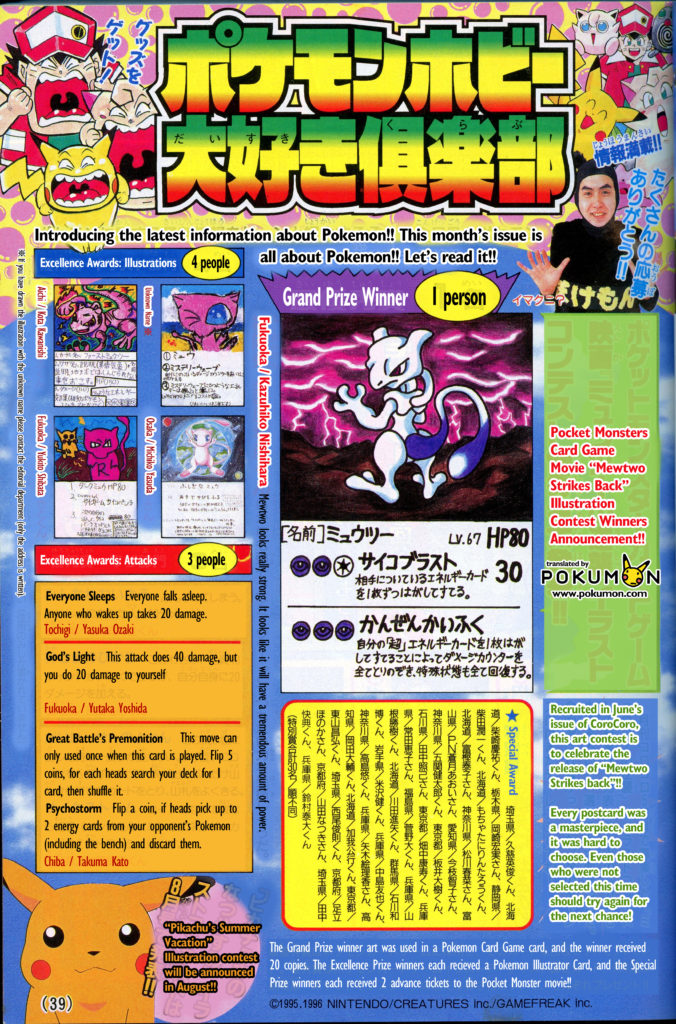
Grand Prize Winner
The Grand Prize winner was Kazuhiko Nishihara from the Fukuoka prefecture. As submitted, his card reads:
Mewtwo
Lv. 67
HP 80
[P][P][C] Psycho Blast (30 damage)
Discard 1 energy card attached to the opponent..
[P][P][P] Complete Recovery
Discard 1 Psychic energy card attached to this Pokemon to remove all damage counters and all special conditions.
Kazuhiko Nishihara’s entry
When the card eventually was printed in the third vending machines series (Expansion Sheet 3), its attacks were altered slightly to make them more balanced:
Mewtwo
Lv. 67
HP 80
[P][P][P] Complete Recovery
Discard all Energy cards attached to this Pokémon. Then, remove all damage counters and markers from this Pokémon and this Pokémon is no longer Poisoned or Confused..
[P][P][C] Psycho Blast (30 damage)
Flip a coin. If heads, discard 1 Energy card attached to the Defending Pokémon.
Printed version
Excellence Awards: Illustrations
4 entrants were selected for the Excellence Award in the Illustrations category. Even though their cards were not printed, translations for each are below to the best of our ability (some are illegible):
Kota Kawanishi (Aichi Prefecture)
“First” Mewtwo
HP 150
[F][W][L][G][P] Extreme Weather (110 Damage)The Defending Pokemon is now paralyzed.
It does incredible things that can’t be done on Earth.
Kota Kawanishi’s Entry
Unknown Name (??? Prefecture)
This entry only had an address attached to it, so the winner’s name was unknown. Printed along the left side of the page was a request for the illustrator to contact CoroCoro’s editorial department to claim their prize.
Mew
Lv. 35
HP 70
[P][P][C] Mystery WaveRemove the damage counters on Mew.
Retreat Cost: [C]
Currently at the ocean
Unknown’s Entry
Yukito Shibata (Fukuoka Prefecture)
“Dark” Mew
HP 80
[P][P][P][P] Psycho Doom Psycho Punch (80 Damage)The next time you use Psycho Punch, it becomes an energy card. Attach it to Mew.
<illegible text>
Yukito Shibata’s Entry
Michiko Yasuda (Osaka Prefecture)
Excellence Awards: Attacks
3 entrants had attacks that they designed chosen as winners of the Excellence Award for attacks. Curiously, the winning announcement only included the name and effects of the attacks, but not the energy costs.
Yasuka Ozaki (Tochigi Prefecture)
Everyone Sleeps
Everyone falls asleep. Anyone who wakes up takes 20 damage.
Yutaka Yoshida (Fukuoka Prefecture)
God’s Light
This attack does 40 damage, but you do 20 damage to yourself.
Takuma Kato (Chiba Prefecture)
Great Battle’s Premonition
This move can only be used once when this card is played. Flip 5 coins, for each heads search your deck for 1 card, then shuffle it.
Psychostorm
Flip a coin, if heads pick up to 2 energy cards from your opponent’s Pokemon (including benched Pokemon) and discard them.
Pikachu’s Summer Vacation Illustration Contest
The last of the early-era illustration contests was announced in the June 1998 issue of CoroCoro Comic, published on May 15, 1998. The contest commemorated the release of the short film attached to the first Pokemon movie, Pikachu’s Summer Vacation, releasing later in the summer in July 1998.
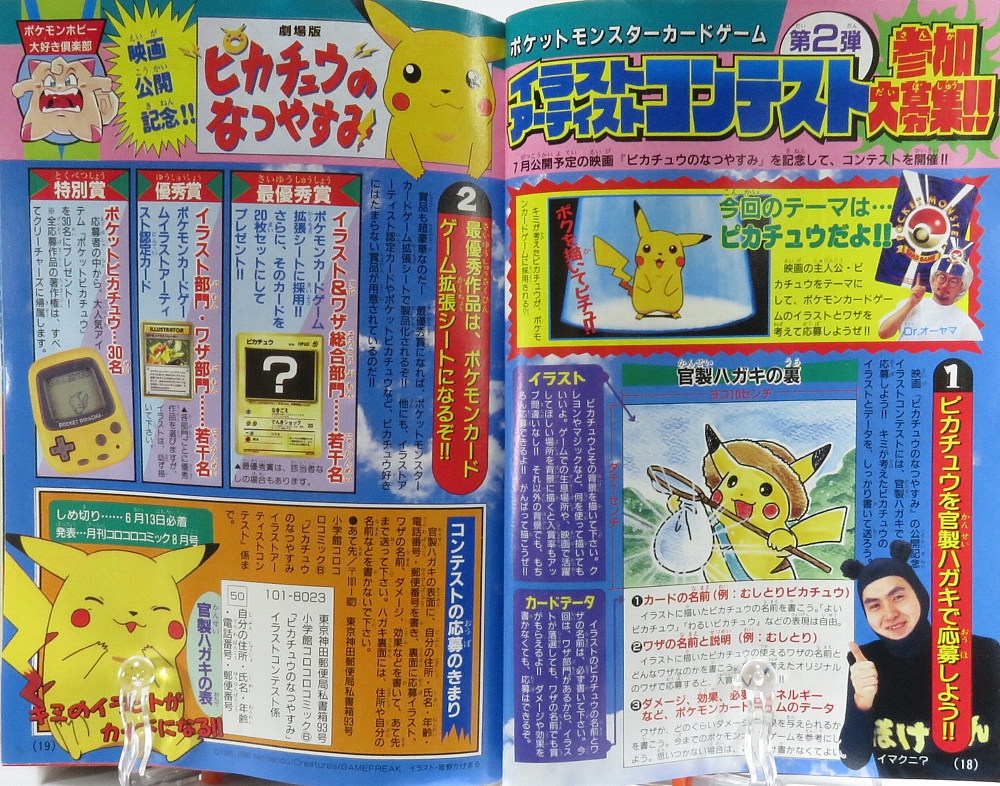
Curiously, the contest was advertised in CoroCoro Comic as the 2nd illustration contest, when in fact it was the 3rd one that had been held and the 3rd to distribute the Pokemon Illustrator card. The theme for this contest would be Pikachu, fitting the theme of the short film it was commemorating.

Entrants would have to do the following to enter:
- Illustrate Pikachu on the top half of the postcard. For some reason, this contest had a slightly smaller 10 x 7 cm space, the previous contest had 10x 8 cm illustration space.
- Come up with a card name (players could use modifiers like “Light”, “Dark”, or other activities like “Bug-catching” as in the example)
- Come up with the card’s attacks and their effects
- Come up with Pokedex data, energy costs, etc. Many of these were optional, as multiple winning entries were missing one or more.
The “Grand Prize” winner would receive a Pokemon Illustrator card as well as 20 copies of their designed card. The designed card would later be printed in an Expansion Sheet set.
There would also be “Excellence Award” winners for 2 categories: Illustration and Attacks. The first would be judged on art quality, while the second would be judged on the card’s attack’s name and effects.
Lastly, 30 “Special Award” honorable mentions would receive a Pocket Pikachu virtual pet toy.
Winners
Winners would be announced 2 months later in the August 1998 issue of CoroCoro Comic, published on July 15, 1998. The winner announcement page correctly tagged the contest as the 3rd illustration contest.
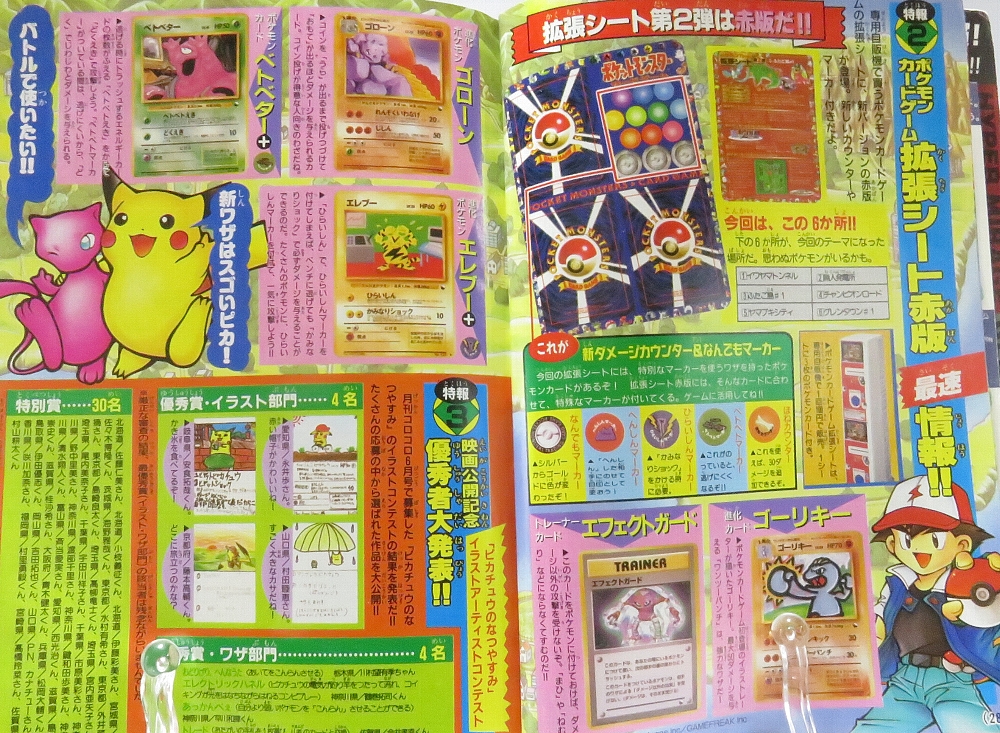
For this contest, there was no Grand Prize winner selected. There were still 8 winners total, but with 4 winners for the Excellence Award: Illustration, and 4 winners for Excellence Award: Attacks. This resulted in another 8 Pokemon Illustrator cards being distributed. This event would be the final source of the coveted card.
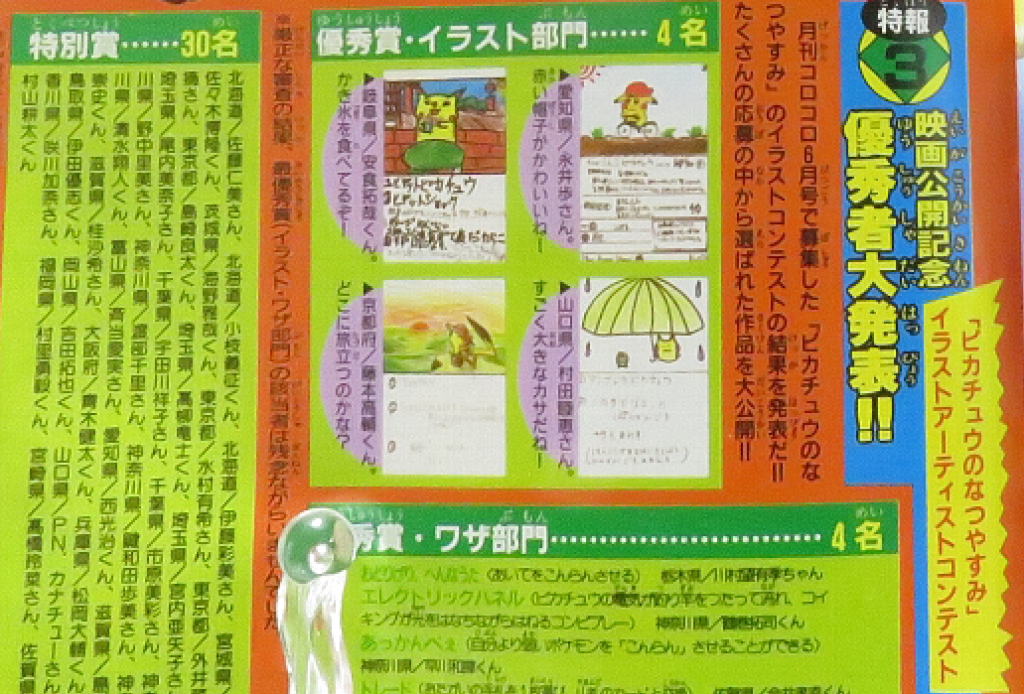
Unfortunately the existing scan is a little too low resolution (and cut-off) to examine the winners in detail.
However, there is a note on the page that says, “Unfortunately after further examination, the person who was the winner of the Grand Prize was unable to be found.” This likely means that the Grand Prize winner did not include the proper address or contact information, so nobody had their entry made into an official card.
Pokemon Illustrator distribution
From the contest information, we can calculate the total number of Pokemon Illustrator promos officially distributed as 39.
First Illustration Contest: 23 copies
- 3 from the Grand Prize Winners
- 20 from Special Award winners
Mewtwo Strikes Back Illustration Contest: 8
- 1 from the Grand Prize Winner
- 4 from the Excellence Award: Illustration Winners
- 3 from the Excellence Award: Attacks Winners
Pikachu’s Summer Vacation Illustration Contest: 8
- 4 from the Excellence Award: Illustration Winners
- 4 from the Excellence Award: Attacks Winners
However, there have been “extra” copies sold by Yuichi “pkonno” Konno, an employee involved in creating the original rules for the Pokemon TCG. Below is a snapshot from June 2020 of him selling a copy of the card. Konno has sold 2 copies so far, and both have been authenticated by PSA as authentic.
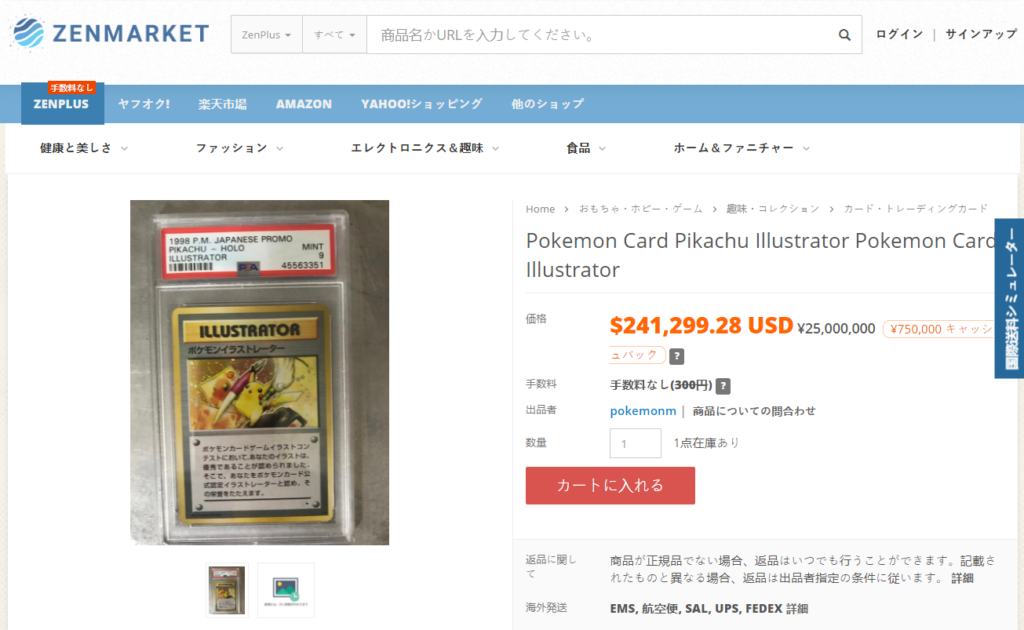
This brings up the total copies so far to 41 copies, with 2 copies being extra ones. It is possible that one of these copies was meant for the Grand Prize Winner of the Pikachu’s Summer Vacation Illustration Contest, but since they were unable to be contacted, Konno kept the card along with his own “master file” copy.
Differences in Contest Winner cards
Each of the 4 Grand Prize winners from the 3 illustration contests received 20 copies of their winning design. It is assumed that these copies were indistinguishable from their regularly printed counterparts in vending machines, but for time it was rumored that winners each received 20 copies of matte-textured copies.
Matte vending machine cards have surfaced in the past, but it has never been clear how exactly they were distributed. Since you can’t actually “peel off” matte cards, it’s unlikely that they came with the standard sheets found in vending machines.
Instead, they’re more likely test run prints, or from other non-standard distribution methods.
Additionally, the contest winner of the Mr. Mime posted this picture on Instagram, showing a glossy version of the Mr. Mime they illustrated next to their Pokemon Illustrator card.
Still, it might’ve been possible that she put a regular copy of the card next to her Pokemon Illustrator card. To make sure, we contacted her and asked about the cards. The contest winner confirmed that all the copies she received were not matte texture:

Legacy
The early Pokemon Illustration contests would pave the way for more contests where Pokemon fans would get to submit their own designs or artwork in hopes of making it onto an official Pokemon TCG card.
Shortly after the first 3 illustration contests were held in Japan, “photo” contests were held to commemorate the new Pokemon Snap game. There would continue to be more Illustration contests in the further future, with 2009, 2010, and more years having both Japanese and international contests. Each of these contest produce exclusive promos for winners, and they remain some of the rarest and most expensive cards to collect.
Overseas, Wizards of the Coast held their own illustration contests as well, but without exclusive prizes. Only one illustration contest winner from the Wizards era had a card make it to print: Craig Turvey’s Snorlax.
This Snorlax would replace Keita Takahashi’s winning Snorlax entry’s artwork in overseas promo prints of the card.
Sources
Special thanks to Efour user chok for helping point out the differences in Contest Winner cards.
- https://web.archive.org/web/20200613004309/https://zenmarket.jp/ja/s/pokemonm/pko_002
- https://web.archive.org/web/20201115011615/https://page.auctions.yahoo.co.jp/jp/auction/g442447388
- https://efour.proboards.com/thread/19920/corocoro-illustration-contest-cards-differentiable?page=1
- https://efour.proboards.com/thread/12787/corocoro-japanese-promo-reprinted-edition
- https://pokemuseum.weebly.com/uncut-sheets.html
- https://www.zoidsland.com/0-rebyu-koro.html
- CoroCoro Magazine January 1998 issue, pg. 43
- CoroCoro Magazine May 1998 issue, pg. 42 – 43
- CoroCoro Magazine June 1998 issue, pg. 18 – 19
- CoroCoro Magazine July 1998 issue, pg. 39
- CoroCoro Magazine August 1998 issue, pg. 29



